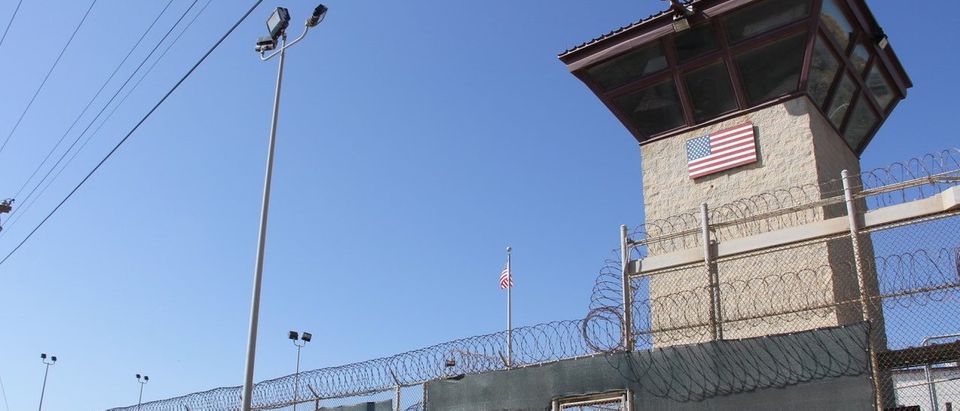Jan. 11 marks the 20th anniversary of al-Qaida and Taliban detainees being held at Guantanamo Bay.
Since that first batch of 20 landed from Kandahar, Afghanistan, the remote U.S. naval base in southeastern Cuba has been central to the War on Terror launched by President George W. Bush after Islamist militants killed nearly 3,000 people on 9/11.
A few years later, I became a Pentagon spokesman when the global top stories often alternated amongst the wars in Iraq and Afghanistan or Guantanamo. Since nearby Andrews Air Force Base was only a three-hour flight to “Gitmo” and public interest was sky high, I visited numerous times with media and NGOs in tow.
Looking back, Gitmo at 20 reminds me of Sergio Leone’s iconic Western “The Good, The Bad and the Ugly” and its soundtrack by Ennio Morricone. So here’s my Gitmo version:
The Good
Gitmo saved lives and prevented another 9/11. Its roughly 780 detainees included the “worst of the worst,” including 9/11 mastermind Khalid Sheikh Mohammed and co-conspirators. Men behind the 1998 U.S. embassy bombings in East Africa, the attack on the USS Cole in 2000, the bombings at Bali nightclubs in 2002 and the J.W. Marriott in Jakarta in 2003 were held there. Hundreds of lower profile, yet equally fanatical fighters, facilitators and bomb makers joined them.
Interrogations stopped terrorist plots by expanding the dragnet. Yet since we could not send battlefield detectives to comb through Afghanistan, it wasn’t feasible to put most detainees on trial due to lack of admissible evidence in U.S. courts. That didn’t make international militants less dangerous, only less prosecutable. Gitmo has been useful to safely and humanely detain them.
Finally, Military Commissions dating back to the Revolutionary War were brought back into a modern form to give many Gitmo detainees their say in court. Those remain in progress.
The Bad
Government overreach gave those at war with America plenty of ammo. Gitmo was fighting a 21st century conflict with a 20th century mindset. It had to be perfect under the microscope, and it wasn’t. Public opinion now is more important than during World War II.
Unlike those days when about 425,000 Axis POWs from Germany, Italy and Japan were detained in the U.S. without much controversy, indefinite detention of terror suspects was always going to be controversial because the hostilities can last indefinitely.
Early vetting for Gitmo lockup was rushed, leading to mistakes. Internal reviews later showed about 5% didn’t belong there. Moreover, infamous Camp X-Ray photos during the first three hectic months of 2002 of men hooded, bound and kneeling in orange-clad jumpsuits doomed Gitmo’s brand forever — even though some military photographers seemingly thought such extreme ways to protect the guard force presented a good look. Additionally, a few early interrogations by poorly trained personnel crossed the line into abuse, isolated incidents far from the norm.
To make up for the poor start and appease the political left, which in retrospect could never be appeased under any circumstance, the government “gold-plated” it at U.S. taxpayer expense. A $750K soccer field. Expensive gym equipment. Wii-fits by Nintendo. Art classes. Gardening. A library. Ramadan feasts. Most detainees had it better than the average inmate in America.
The excessive cost per detainee cited as justification to close Gitmo can be greatly reduced by streamlining operations which have for a decade been grossly disproportionate to the number held. Does each one really need about 50 guards? Must they be outnumbered by their doctors, nurses and cooks?
The Ugly
Global corporate media obsessed over Gitmo’s flaws every day for years and turned its image into a virtual Frankenstein. Thousands of “news” reports were inflammatory and misleading.
Though Gitmo media coverage wasn’t based on a hoax like “Hands up, Don’t Shoot,” which fueled the 2014 Ferguson riots, or Russiagate, ironically some players were the same. Mike Isikoff, among the first journalists to push Trump-Russia conspiracies from the discredited Steele Dossier in 2016, also erroneously reported that an interrogator flushed a Koran down the toilet in 2005 — leading to riots in six countries, killing 17 in Afghanistan alone.
NGOs like Amnesty International, Human Rights Watch, Human Rights First and the ACLU partnered with the media and far left donors to discredit Gitmo. That led to hundreds of dangerous detainees being released. In 2020, the Director of National Intelligence (DNI) reported that about 230 were confirmed or suspected of returning to terrorism and most remain at large. Thus killing sprees against Americans will continue.
Today, just 39 hardcore detainees remain. Though the Biden administration would like to close Gitmo as the Obama administration tried and failed to do, Congress continues to block such moves. And thank goodness. Otherwise, detainees could be released onto Main Street, USA, or attract “mostly peaceful” protests wherever they go. Gitmo remains physically out of reach barring a miracle and is still the “least bad” option for U.S. national security.
J.D. Gordon is a former National Security & Foreign Policy Advisor to Republican leaders Donald Trump, Mike Huckabee and Herman Cain. Previously, he served as a Pentagon spokesman during the George W. Bush Administration and is a retired Navy Commander.


